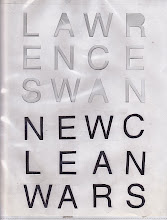
The Lascaux drawings are impressive in their artfulness. They have an elegance achieved by drawing for the pleasure of drawing. The animals are naturalistically rendered, and the scenes don’t seem to be loaded with symbolic meaning, the elements of the pictures don’t appear to belong to a symbol system. They do , or can, function as propositions in the Tractarian sense, because they provide pictures of their world, of life in paleolithic Europe. I still have questions. Was there a division of labor seperating artists from hunters? Hunting was necessary labor, but was picture-making also considered necessary? Did the pictures have some specific social use -- as a record of events, or as a summoning of magical powers? Were the hunters also the picture-makers? Did the picture-makers have more, less, or equal social status with the hunters? Were they revered or considered parasites?
The art draws from the excitement of the hunt. The hunt is as much a sport as it is a necessity, and drawing is also a sport, but a different kind, requiring different skills, and giving different pleasures. Is the Lascaux cave like a temple? A gallery? A rec room with pictures of hunting scenes? We project our fantasies on the walls and see magic and mystery, an attempt to acquire power over life and death, maybe. We are familiar with the need to make “art,” and look for the prehistoric secret of that need. The peculiar stick figure, in particular, invites interpretation because it differs so much from the naturalism of the animal it is confronting, and we can’t know if that is because it was added by an artist of lesser, or different, talent, or if it does have a symbolic, maybe magical, use. It might depict a kind of scarecrow or decoy, or a supernatural figure or shapeshifter, or just paleolithic graffiti with a meaning that is not recoverable. Compare that scene with Wittgenstein’s fighting stick figures. Is the picture stating that this actually happened? Joseph Campbell popularized the reading or misreading of this stick figure as a shaman. My misreading of Lascaux is a storytelling game that sees the stick man as a possible ancestor, though geographically distant, of Thoth, the ibis-headed scribe of the gods who invented hieroglyphic writing as well as arts and sciences. The ancient Greeks identified Thoth with Hermes. By transforming pictures into symbols for speech, Thoth created the means to record, store, and transmit knowledge.

























